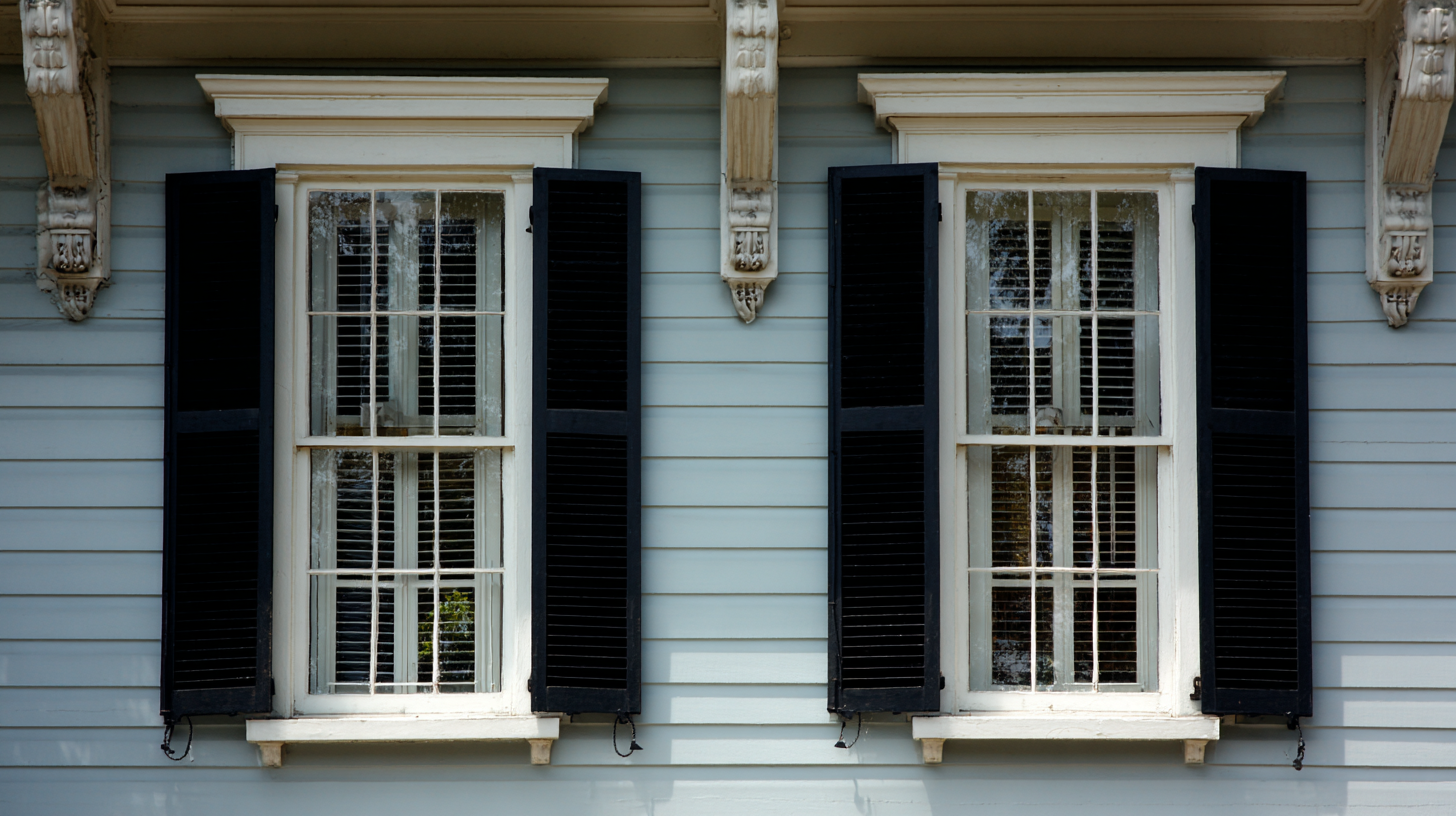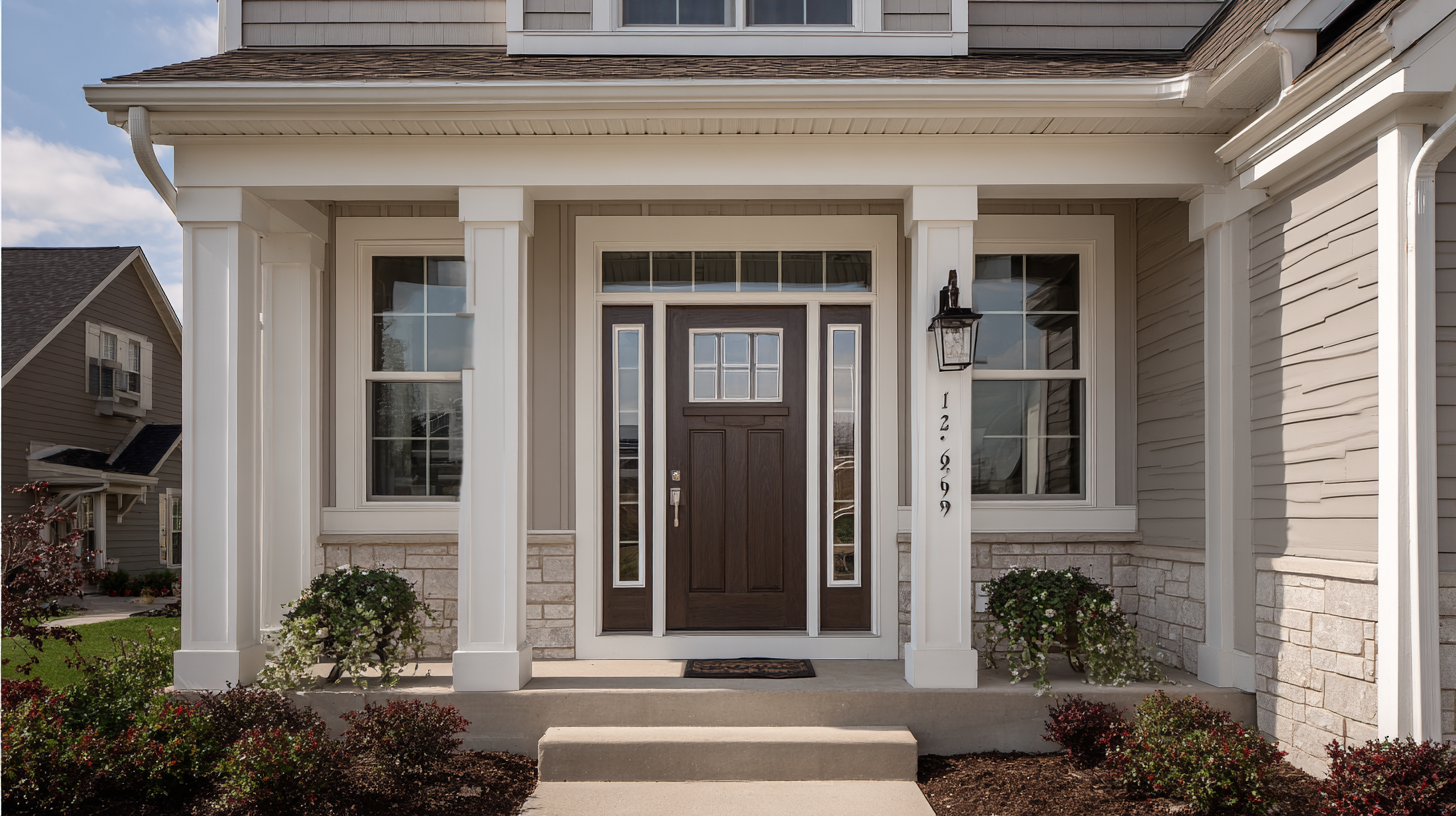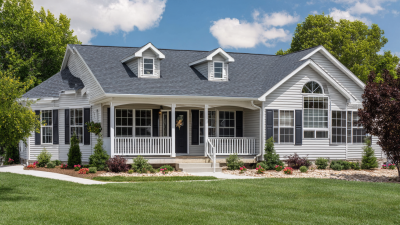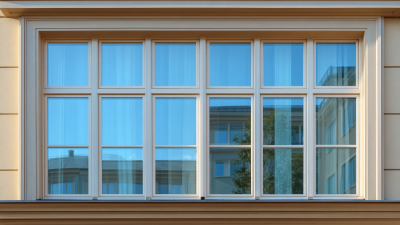2025 Top 10 Exterior Storm Windows: Best Choices for Energy Efficiency
As homeowners increasingly prioritize energy efficiency in their residences, the demand for exterior storm windows has surged. According to the U.S. Department of Energy, well-placed storm windows can reduce air leakage by up to 50%, significantly improving a home’s thermal performance. In this context, the year 2025 brings forth a critical exploration of the top-performing exterior storm windows available on the market. These innovative solutions not only enhance comfort by minimizing drafts but also offer financial benefits through reduced heating and cooling costs.

Expert in building technologies, Dr. Emily Carter, emphasizes the crucial role of exterior storm windows in the quest for energy efficiency. “Investing in high-quality storm windows is a smart way for homeowners to reduce energy consumption while maintaining aesthetic appeal,” she states. As we delve into the top 10 choices of exterior storm windows for 2025, it becomes evident that selecting the right option is not merely about cost—it's about making a long-term investment in sustainability and efficiency. This guide aims to inform consumers about their best choices in order to make informed decisions that will benefit both their wallets and the environment.
Top Factors to Consider When Choosing Energy-Efficient Exterior Storm Windows
When selecting energy-efficient exterior storm windows, it's crucial to consider several key factors that influence their performance and effectiveness. Firstly, the material of the window frame plays an important role; options such as fiberglass and vinyl are known for their superior insulation properties and durability. Additionally, the type of glazing is vital—look for windows with multiple layers, such as double or triple glazing, which can significantly reduce heat loss and enhance energy savings.
Another factor to consider is the energy certification. Windows bearing energy efficiency labels, like the Energy Star certification, guarantee compliance with certain standards that can lead to substantial savings on heating and cooling bills. Homeowners should also assess the overall installation quality, as even the best windows can underperform if not installed properly. Lastly, it’s essential to evaluate the cost-to-benefit ratio; investing in higher-quality windows may result in greater energy savings and increased home value over time.
The Best Materials for Durable and Effective Storm Windows
When choosing exterior storm windows, the materials used play a crucial role in ensuring durability and energy efficiency. Vinyl, fiberglass, and aluminum are among the top materials recommended by experts for their performance capabilities. According to a report from the American Council for an Energy-Efficient Economy (ACEEE), high-quality vinyl storm windows can reduce air leakage by as much as 45%, significantly improving a home’s overall energy efficiency.
Fiberglass offers an excellent alternative, combining strength and lightweight properties that make it ideal for storm windows. The National Renewable Energy Laboratory (NREL) highlights that well-designed fiberglass storm windows can provide up to 30% more insulation than traditional glazing. This increase in thermal performance helps homeowners reduce heating and cooling costs, showcasing fiberglass as a sustainable choice in building materials.
Aluminum, while often perceived as less energy-efficient, has made strides through advancements in thermal break technology. Recent studies indicate that modern aluminum storm windows with thermal breaks can achieve insulation values comparable to vinyl options. This innovation offers homeowners a choice that balances aesthetics and energy performance, making aluminum a viable contender in the storm window market.
2025 Top 10 Exterior Storm Windows: Best Choices for Energy Efficiency
| Window Model | Material | Energy Efficiency Rating | Price Range | Durability |
|---|---|---|---|---|
| Model A | Vinyl | R-5.5 | $150 - $300 | 15 years |
| Model B | Aluminum | R-6.0 | $200 - $400 | 20 years |
| Model C | Wood | R-4.5 | $250 - $500 | 10 years |
| Model D | Fiberglass | R-7.0 | $300 - $600 | 25 years |
| Model E | Composite | R-5.0 | $275 - $550 | 15 years |
| Model F | Vinyl | R-6.5 | $180 - $350 | 18 years |
| Model G | Aluminum | R-6.8 | $210 - $420 | 22 years |
| Model H | Wood | R-5.5 | $230 - $460 | 12 years |
| Model I | Fiberglass | R-7.5 | $350 - $700 | 30 years |
| Model J | Composite | R-6.0 | $290 - $580 | 20 years |
Innovative Features to Enhance Energy Efficiency in Storm Windows
When selecting storm windows for energy efficiency, innovative features play a crucial role in enhancing performance. One of the standout features to look for is the incorporation of low-emissivity (Low-E) glass. This type of glass reflects heat back into the home during winter while keeping unwanted heat out during summer. The result is a more consistent indoor temperature and reduced energy consumption for heating and cooling.
Another significant advancement is the use of insulated frames, which further improve thermal performance. Windows with these frames often include multiple layers of insulation, minimizing heat transfer. In addition, products designed with advanced sealing technology help eliminate air leaks, which can compromise energy efficiency. Together, these features not only enhance the effectiveness of storm windows but also contribute to long-term savings on energy bills and increased comfort in the home.

Comparative Analysis of the Top 10 Brands for Exterior Storm Windows
When selecting exterior storm windows for optimal energy efficiency, it's crucial to consider various factors that contribute to overall performance. A comparative analysis of the top 10 brands reveals that insulation quality is often more impactful than merely the thickness of the materials used. For example, studies indicate that windows treated with advanced insulation techniques can reduce energy loss by up to 30% compared to traditional options. Additionally, brands that incorporate double or triple glazing systems tend to outperform single-glazed counterparts in energy retention and noise reduction.
Tips: When evaluating storm window options, look for models with low-E coatings which help reflect heat back into your home during winter while keeping it cool in summer. Also, consider the window frame material; vinyl and fiberglass options typically offer better insulation properties than aluminum.
Moreover, durability is another critical element to consider. High-quality exterior storm windows not only enhance energy savings but also increase the lifespan of your windows. Industry reports show that effective storm windows can last upwards of 20 years, significantly reducing the need for frequent replacements. As you make your decision, be mindful of the long-term benefits that come with investing in reliable and energy-efficient storm windows.
Installation Tips for Maximizing the Performance of Storm Windows
Installing storm windows can significantly enhance your home's energy efficiency, especially as energy costs continue to rise. According to the U.S. Department of Energy, properly installed storm windows can improve insulation by up to 50%, reflecting the investment value while minimizing utility bills. Whether you choose interior or exterior storm windows, adhering to best practices during installation is crucial for optimizing their performance.
**Tips:** Ensure that your storm windows are custom-fit to the existing frames to avoid any air leaks. Weatherstripping around the edges can further prevent drafts, enhancing thermal performance. Additionally, consider using low-emissivity (Low-E) glass, which can reduce heat transfer and improve energy efficiency. Lastly, regularly inspect the seals and frames for wear and tear to ensure your storm windows continue to perform at their best.
A meticulous installation process also stands out in the longevity of your storm windows. According to a report from the National Fenestration Rating Council, the right placement and sealing can reduce condensation and prevent mold growth, which is vital for maintaining air quality within your home. By investing the time and effort in correct installation, you'll not only safeguard your windows but also reap the long-term benefits of lower energy costs and a more comfortable living environment.

Related Posts
-

Exploring the Efficiency of Value Windows: How Energy Savings Can Reduce Your Bills by Up to 30%
-

Exploring the Best Energy Efficient Windows and Doors for Your Home Makeover
-

Top 10 Value Windows: Affordable Solutions for Energy Efficiency and Home Comfort
-

Unlocking Efficiency: What Value Windows Mean for Your Home Energy Savings
-

Discovering Window Places: The Hidden Benefits of Natural Light in Your Home
-

The Ultimate Guide to Choosing the Best Exterior Storm Windows for Your Home
Our Location
476 Main Street - Route 28
Dennisport, MA 02639
Business Hours -
- Mon - Fri
- -
- Saturday
- -
- Sunday
- Closed

Share On: